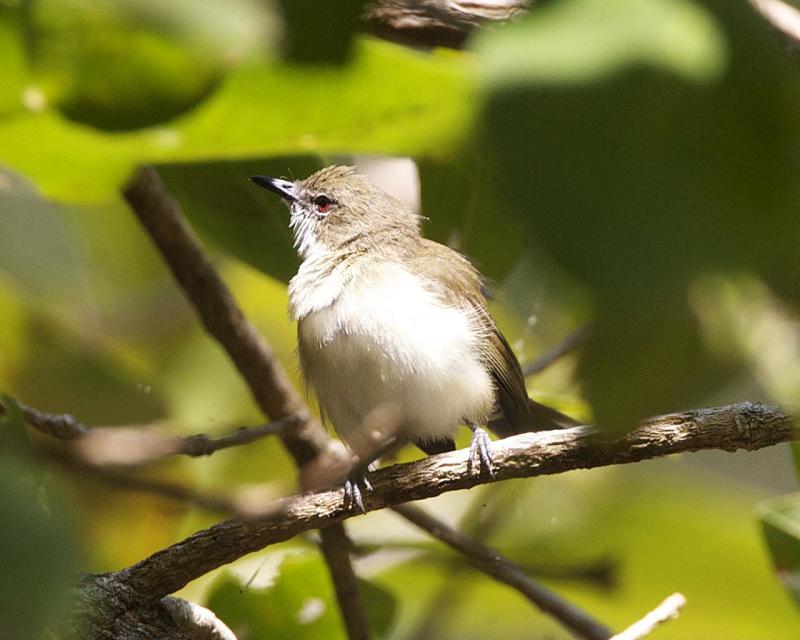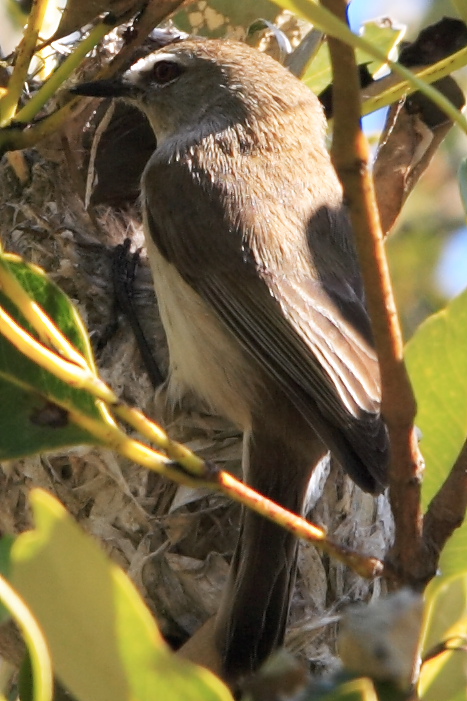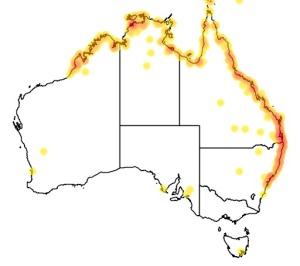Colours
Distinguishing features
The plumage is grey above with a white throat, belly, flanks and rump. There is a distinct white eye stripe. The bill and legs are black and the iris is red. The subspecies G. l. pallida is slightly browner above and G. l. cantator is slightly larger and heavier. (Wikipedia)
Size
- From 9 cm to 11 cm (Length of specimen)
Wingspan
- Wingspan data is not yet available.
Synonyms
Distribution
Distribution and habitat preferences
The species is princiapally distributed in mangrove forests and in forests and woodland adjacent to mangroves. The species will move into nearby forests from mangroves to feed, particularly in the breeding season.
Where its range overlaps with that of the Large-billed Gerygone in the Kimberley, it is actually displaced from the mangroves and is instead found in scrubland dominated by paperbarks and acacia. (Wikipedia)
Diet
The species feeds in the foliage of trees on insects, including beetles, grasshoppers, wasps, ants and moths. It is less likely to catch prey in the air than other gerygones, but will join mixed-species feeding flocks with white-eyes, honey-eaters and fantails. The species mostly feeds in the canopy but will forage amongst the roots of mangroves. (Wikipedia)




